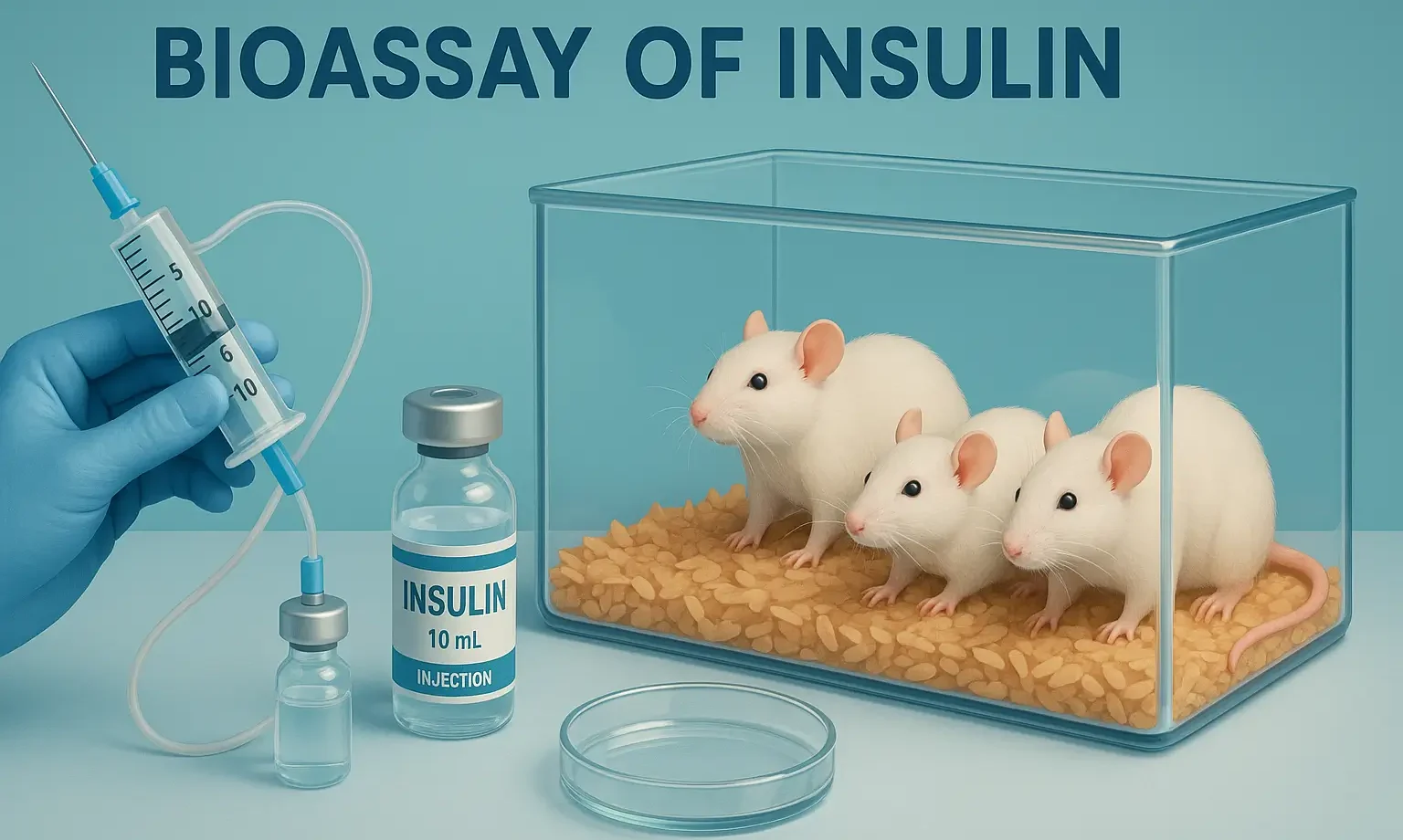- Bioassay of Insulin: Ensures potency, efficacy, and standardization of insulin preparations.
- Bioassay of Insulin: Measures hypoglycemic activity using rabbit or mouse blood glucose levels.
Principle of Bioassay of Insulin
- Insulin lowers blood glucose levels by promoting glucose uptake in peripheral tissues and inhibiting hepatic glucose output.
- The bioassay evaluates the hypoglycemic effect of a test preparation vs. a standard insulin preparation.
Methods
1. Rabbit Method (Hypoglycemic Convulsion Method)
- Procedure:
- Preparation: Rabbits fasted for 18–24 hours (water allowed).
- Dosing: Standard insulin administered intravenously or subcutaneously; test insulin given to a separate group.
- Observations: Monitor for hypoglycemic convulsions, coma, or measure blood glucose levels at intervals.
- Potency Determination: Compare ED50 values or onset time for hypoglycemic symptoms between test and standard samples using dose-response curves.
- Potency Determination: Compare the time to convulsion/coma or reduction in blood glucose for standard vs. test.
2. Mouse Blood Glucose Method:
- Procedure:
- Preparation: Mice fasted for 6–8 hours.
- Dosing: Graded doses of standard insulin and test insulin administered.
- Observations: Measure
- Data Analysis: Compare dose-response curves for test and standard insulin to determine potency.
- Potency Determination: Plot the dose-response for blood glucose drop against the standard and test preparations.
Click Here to Watch the Best Pharma Videos

